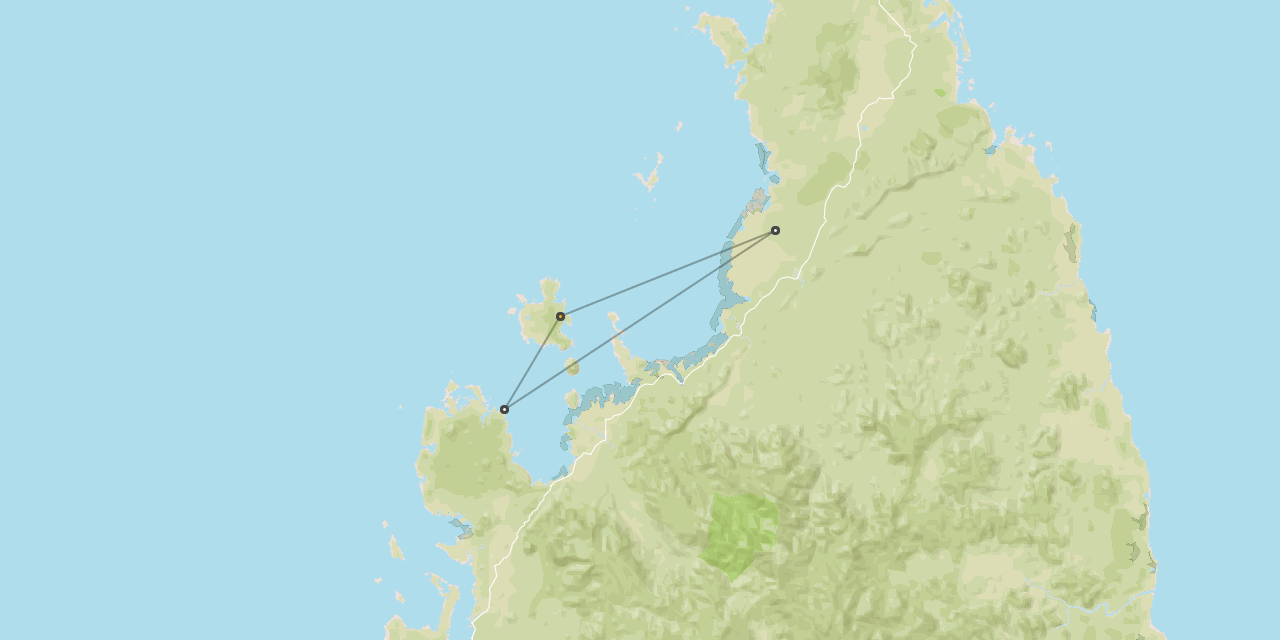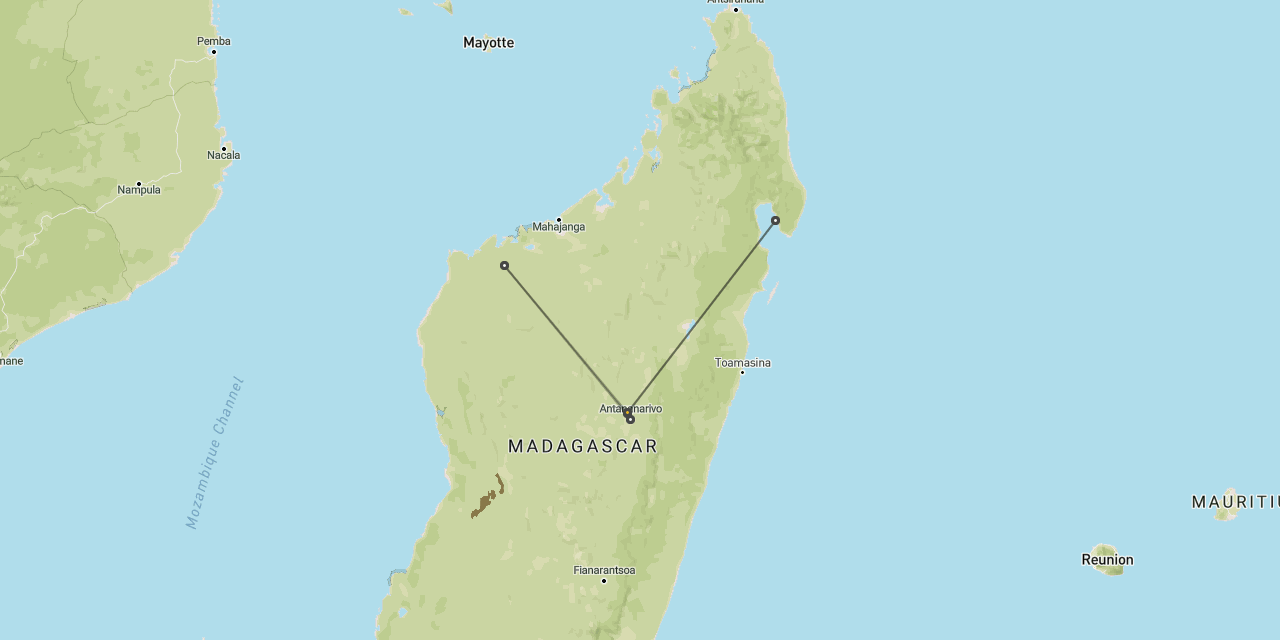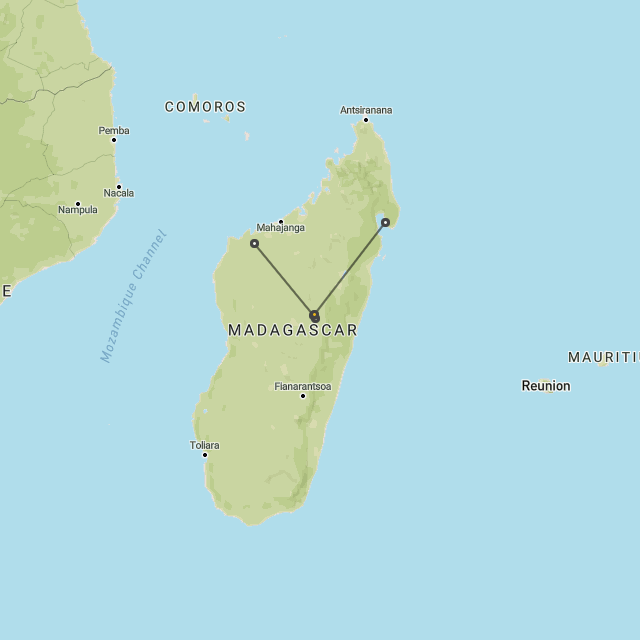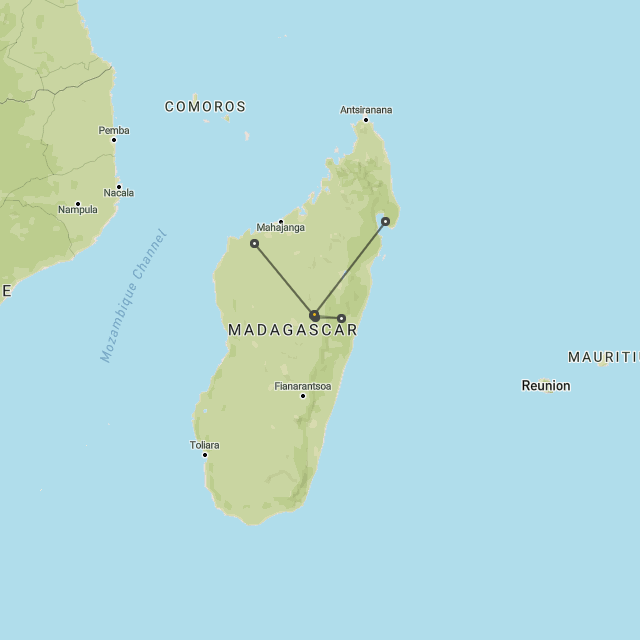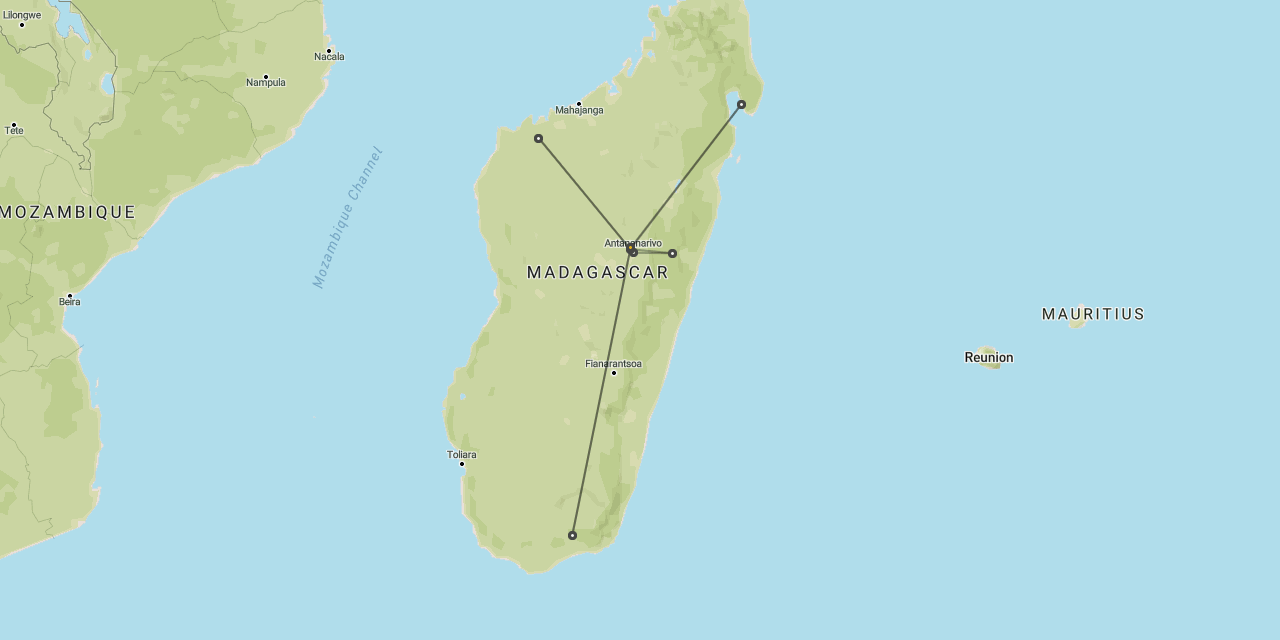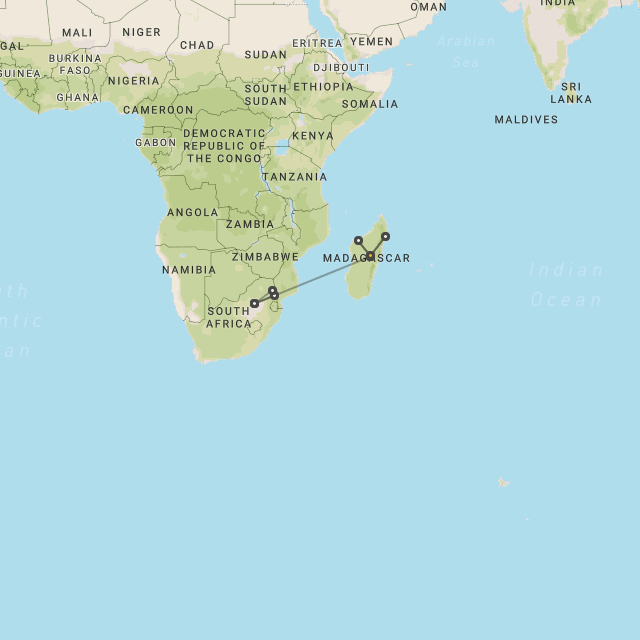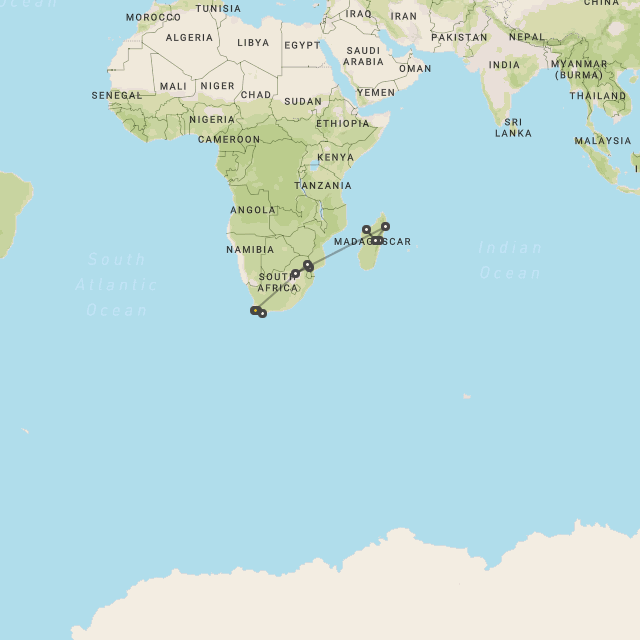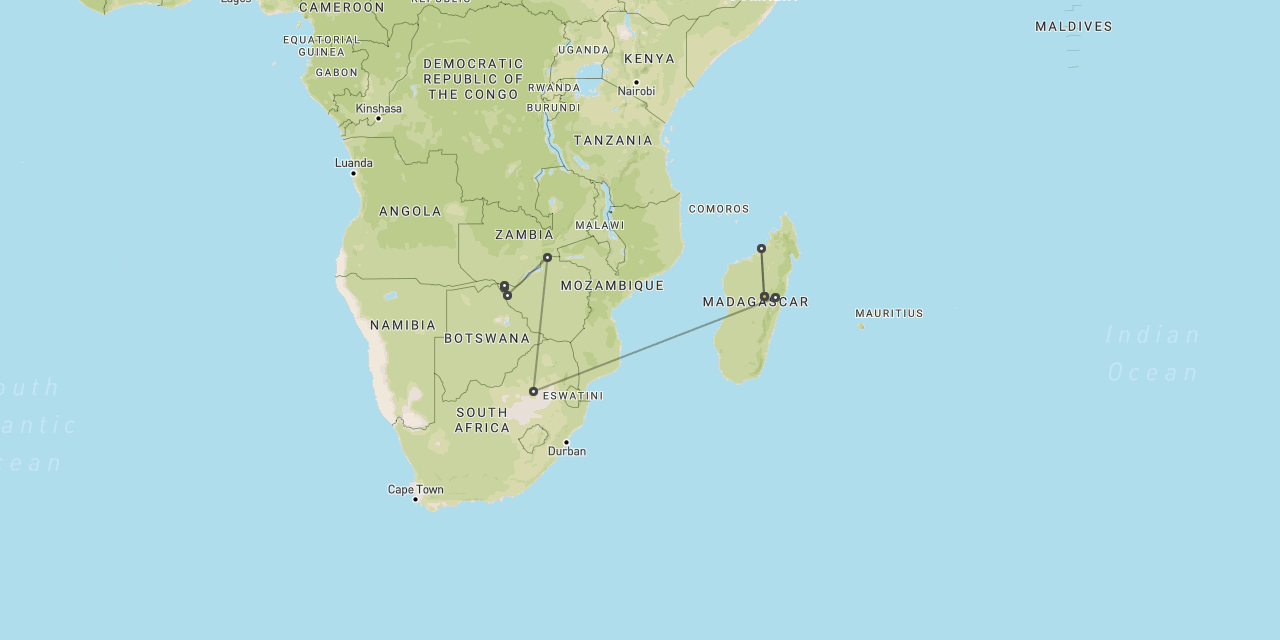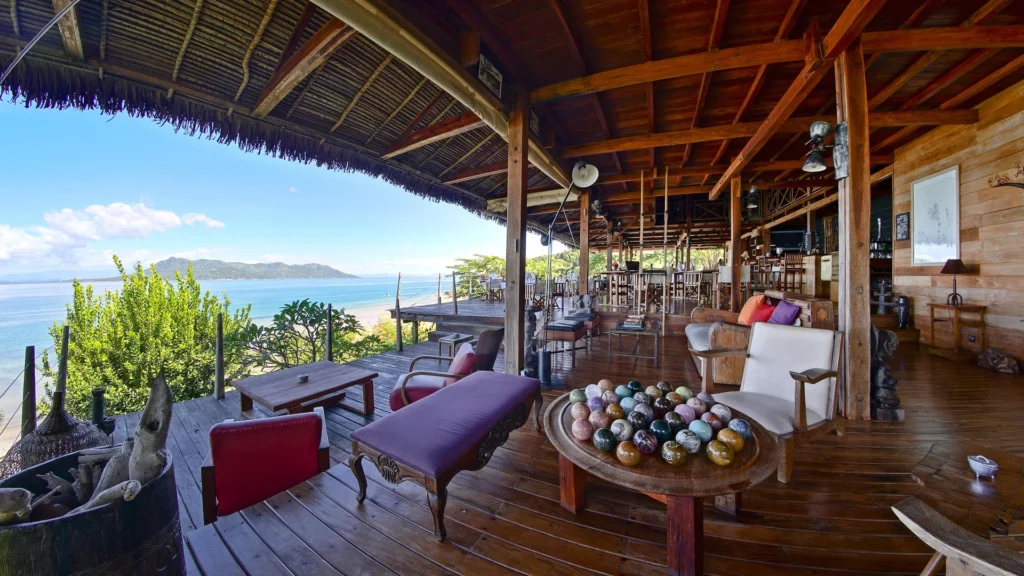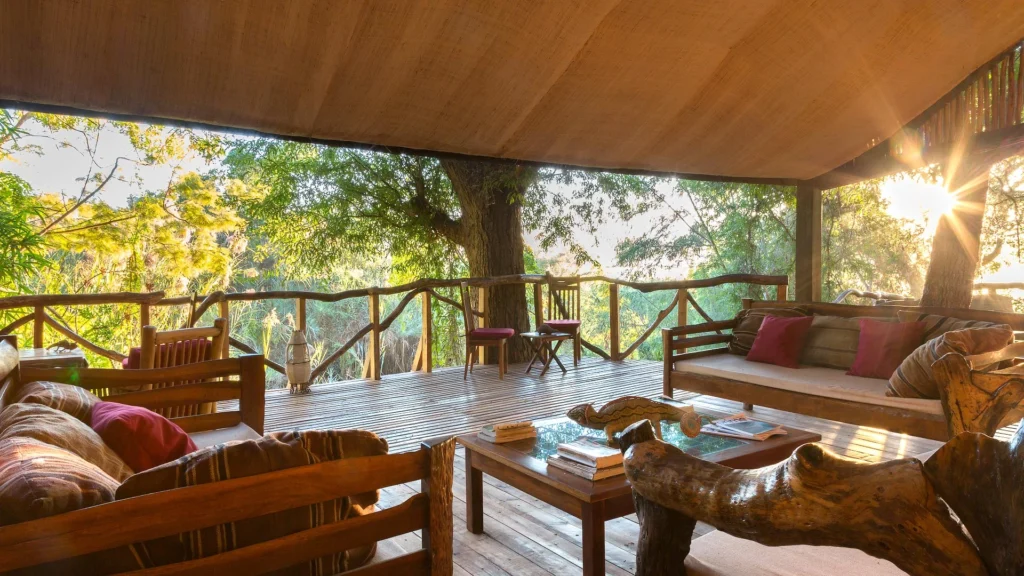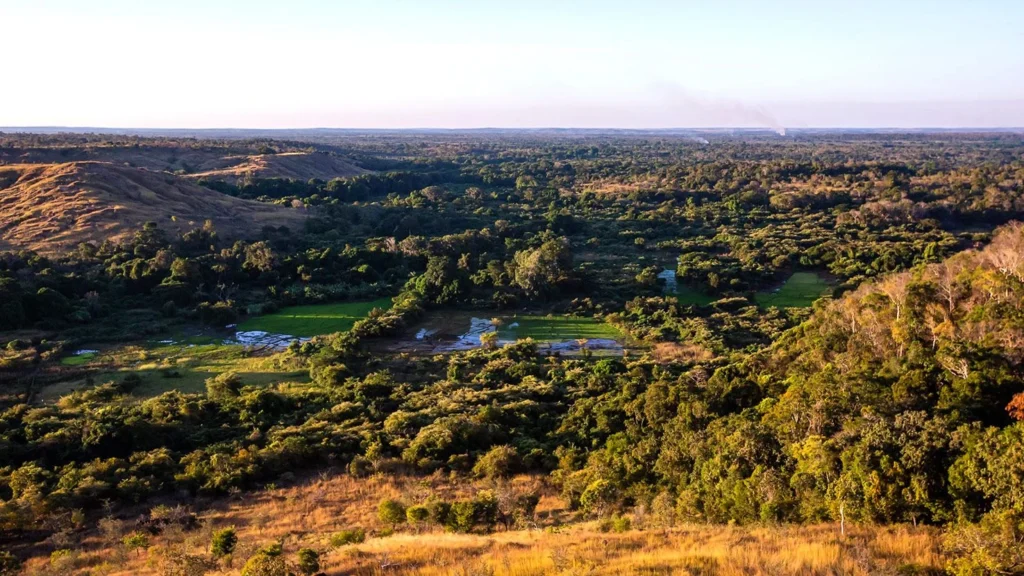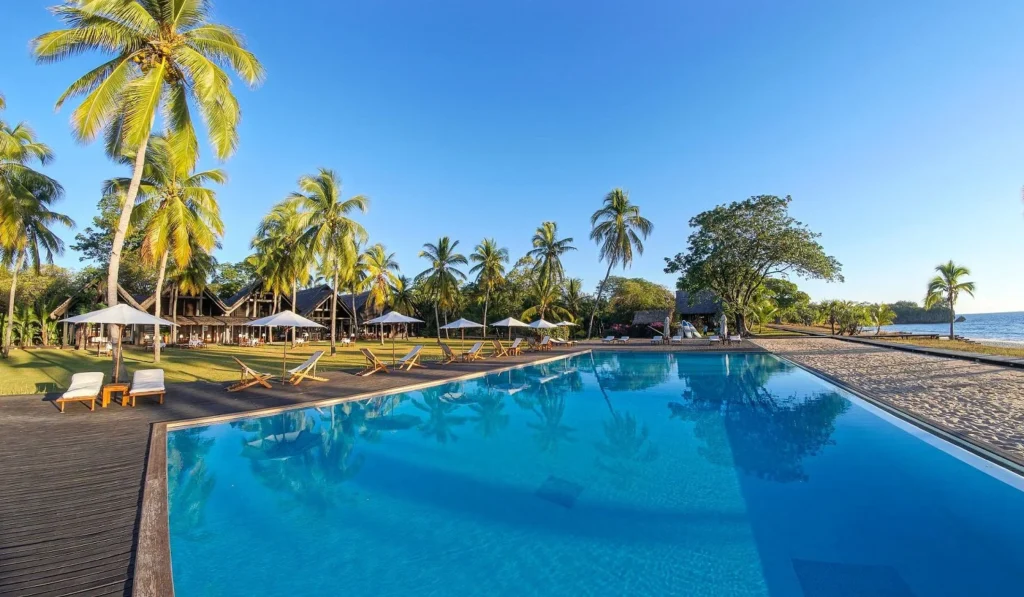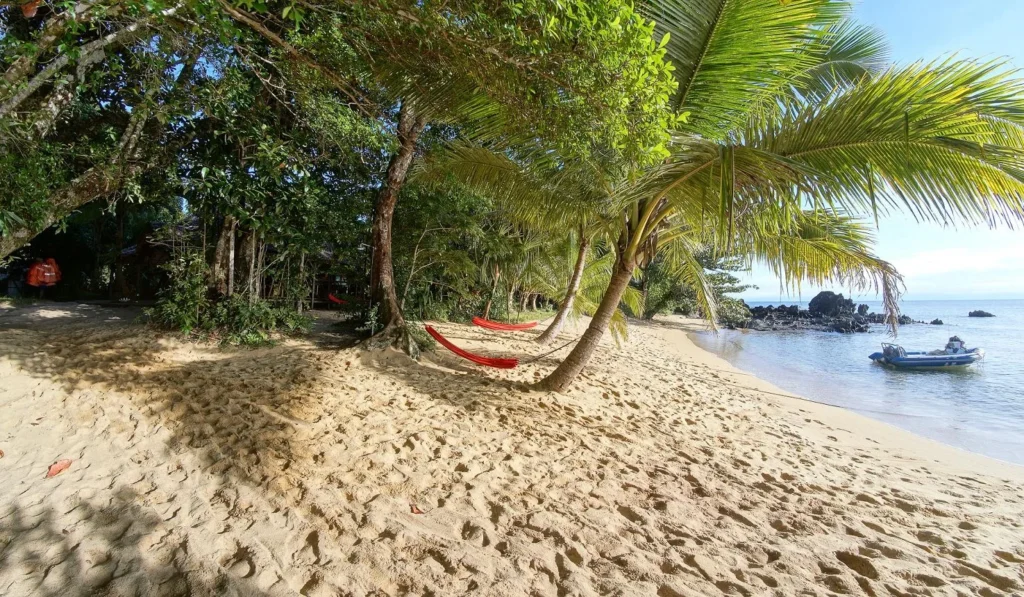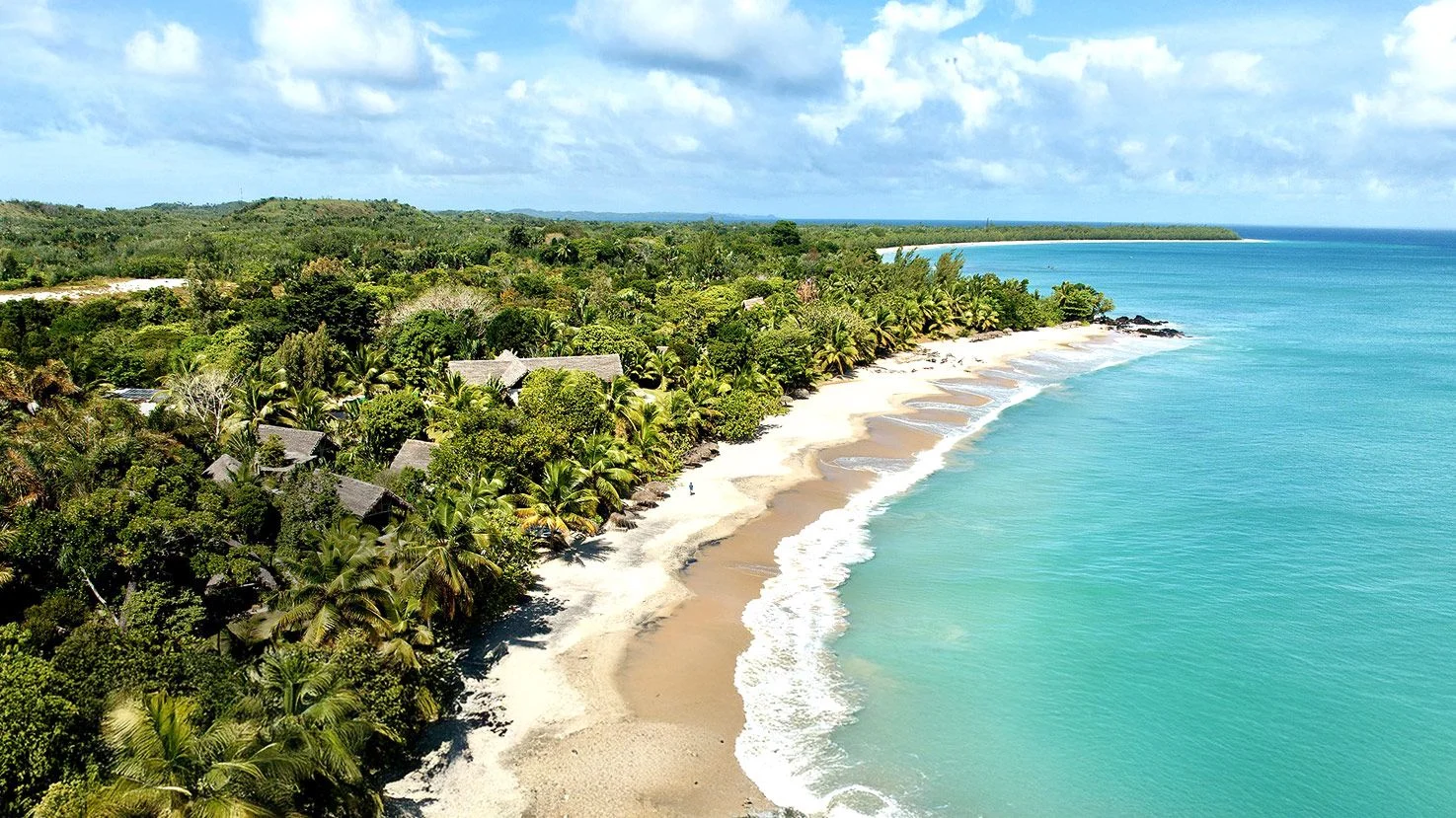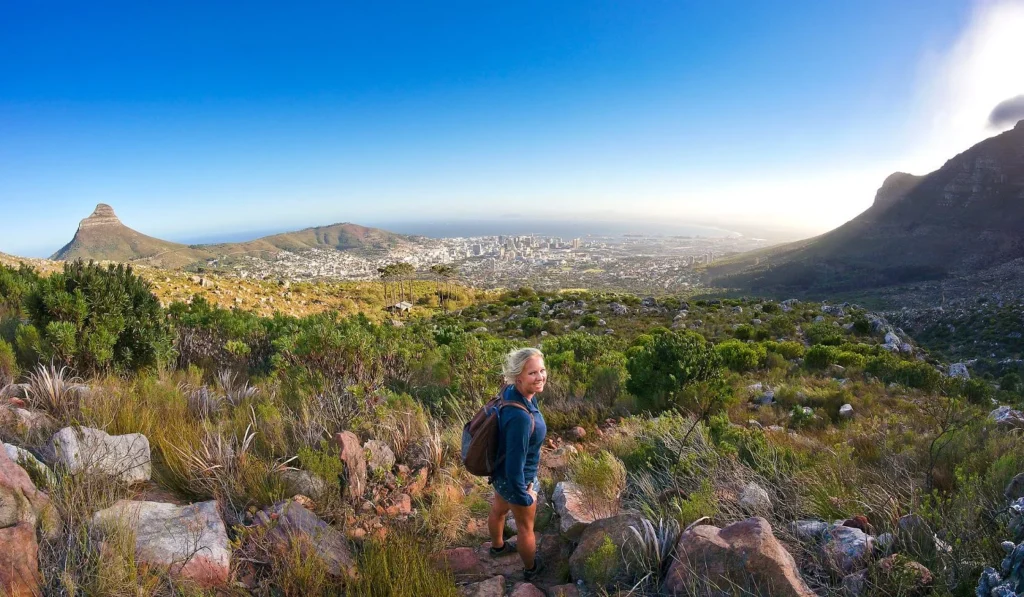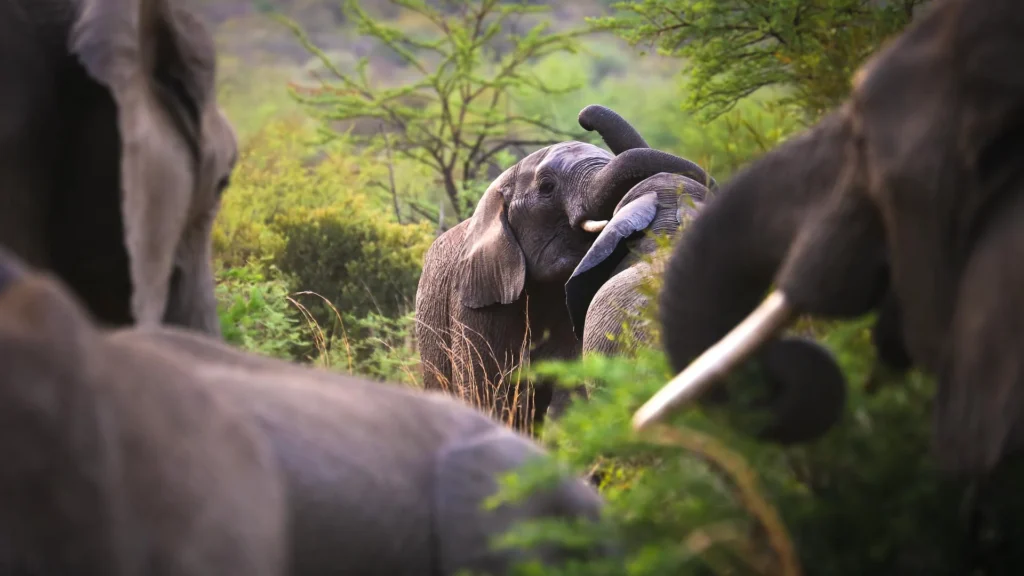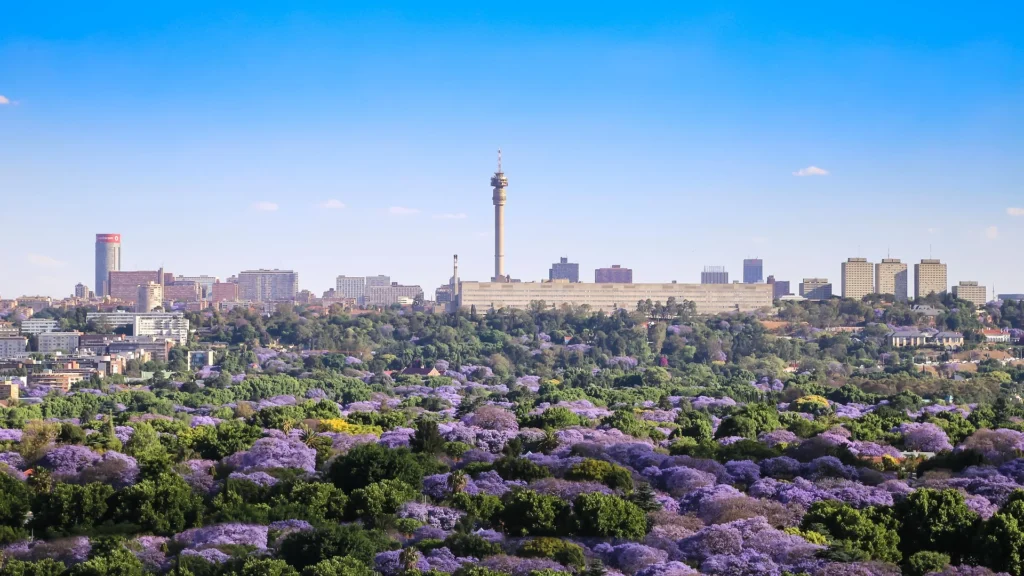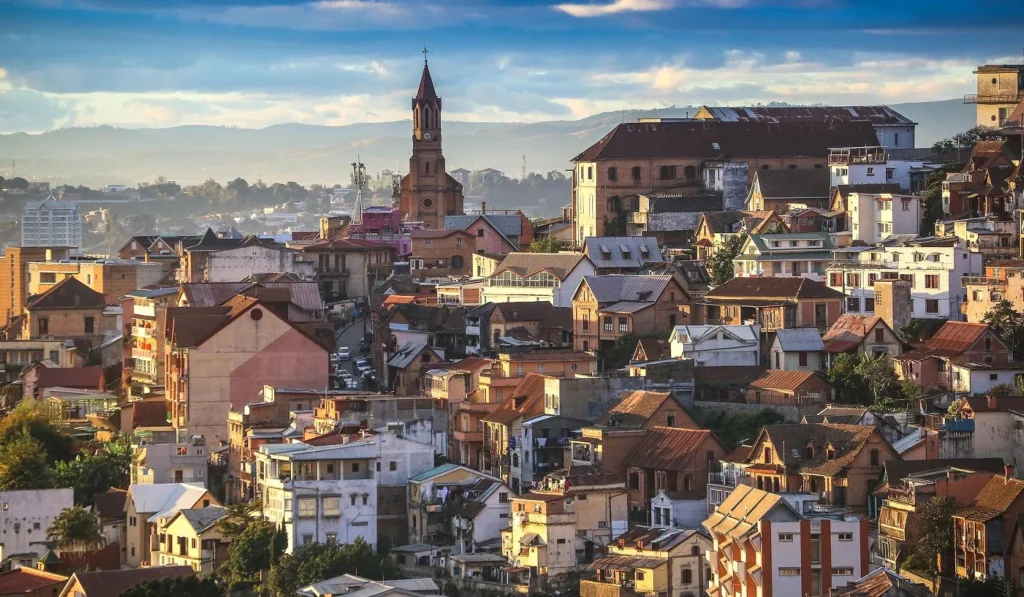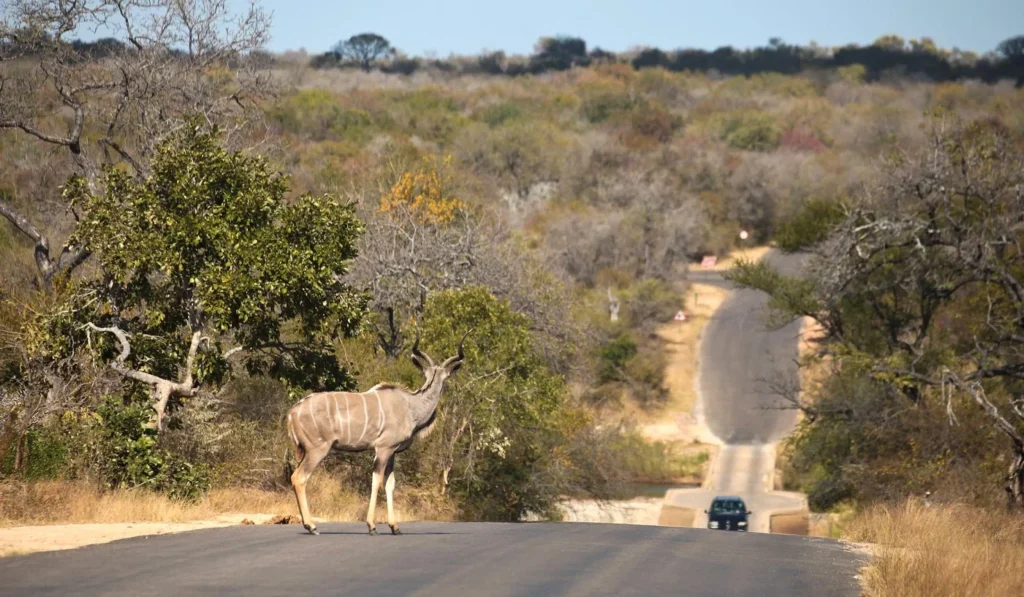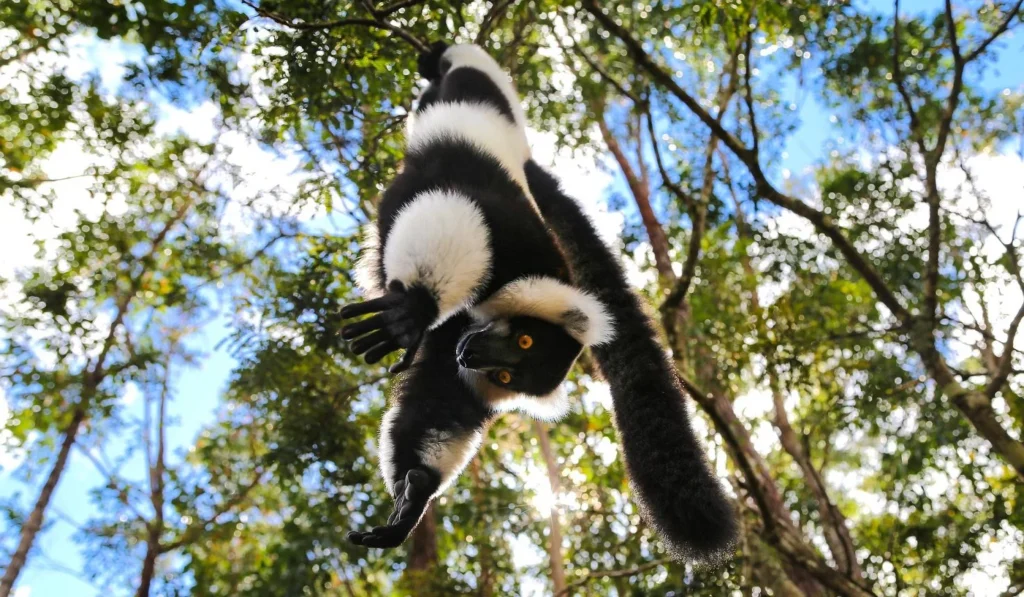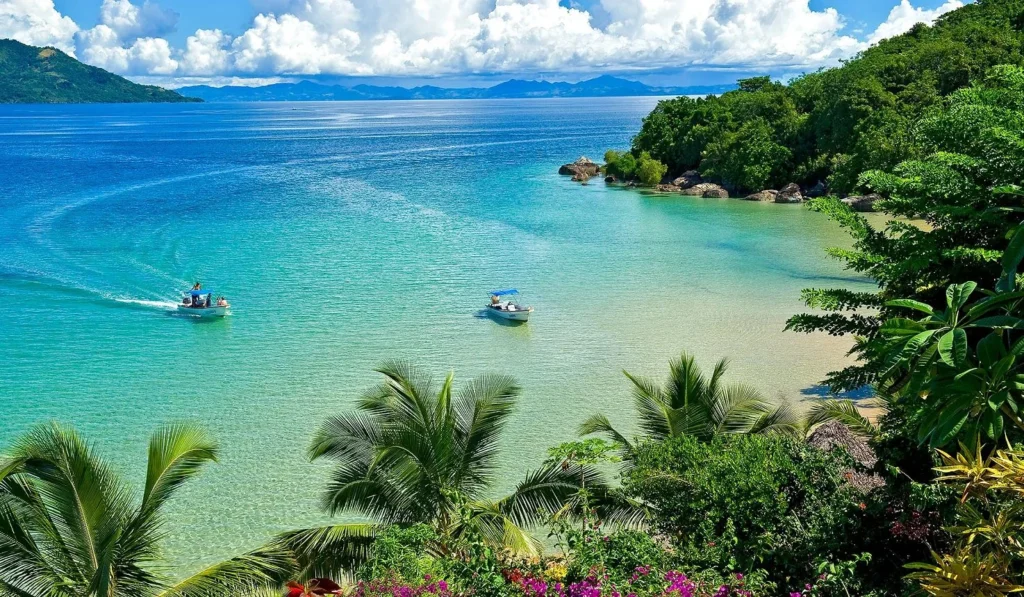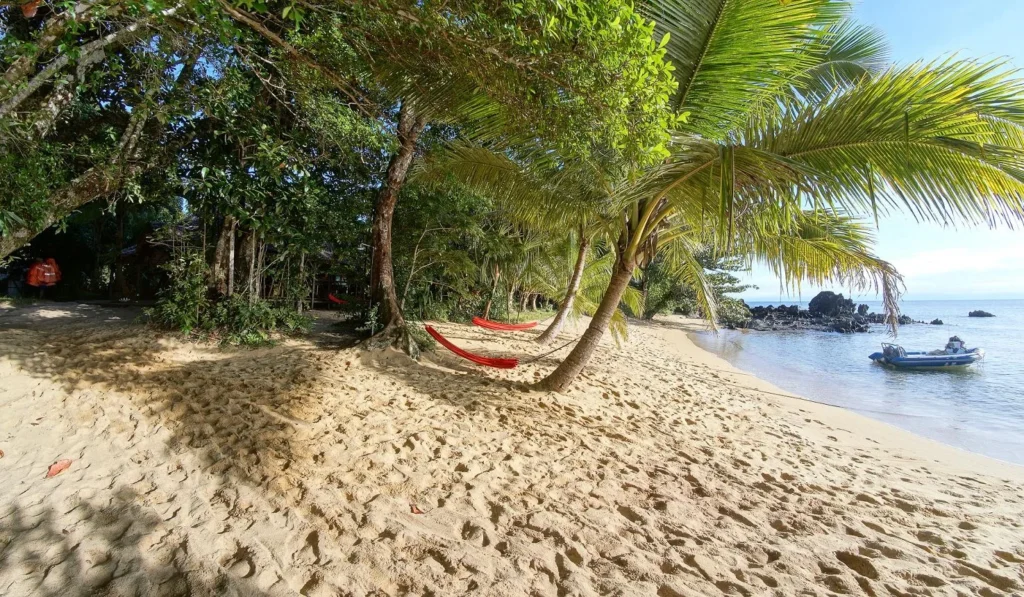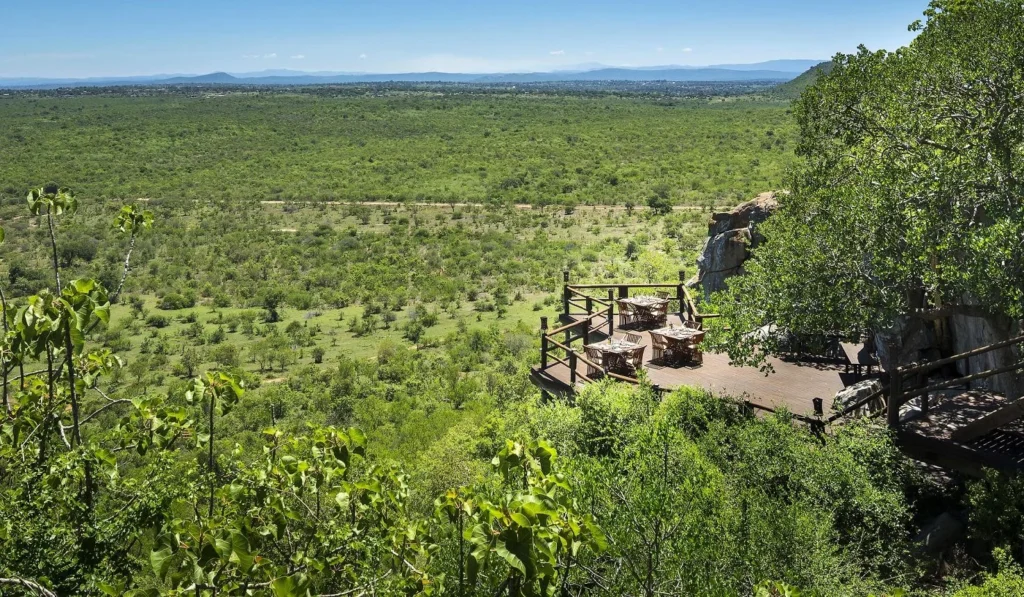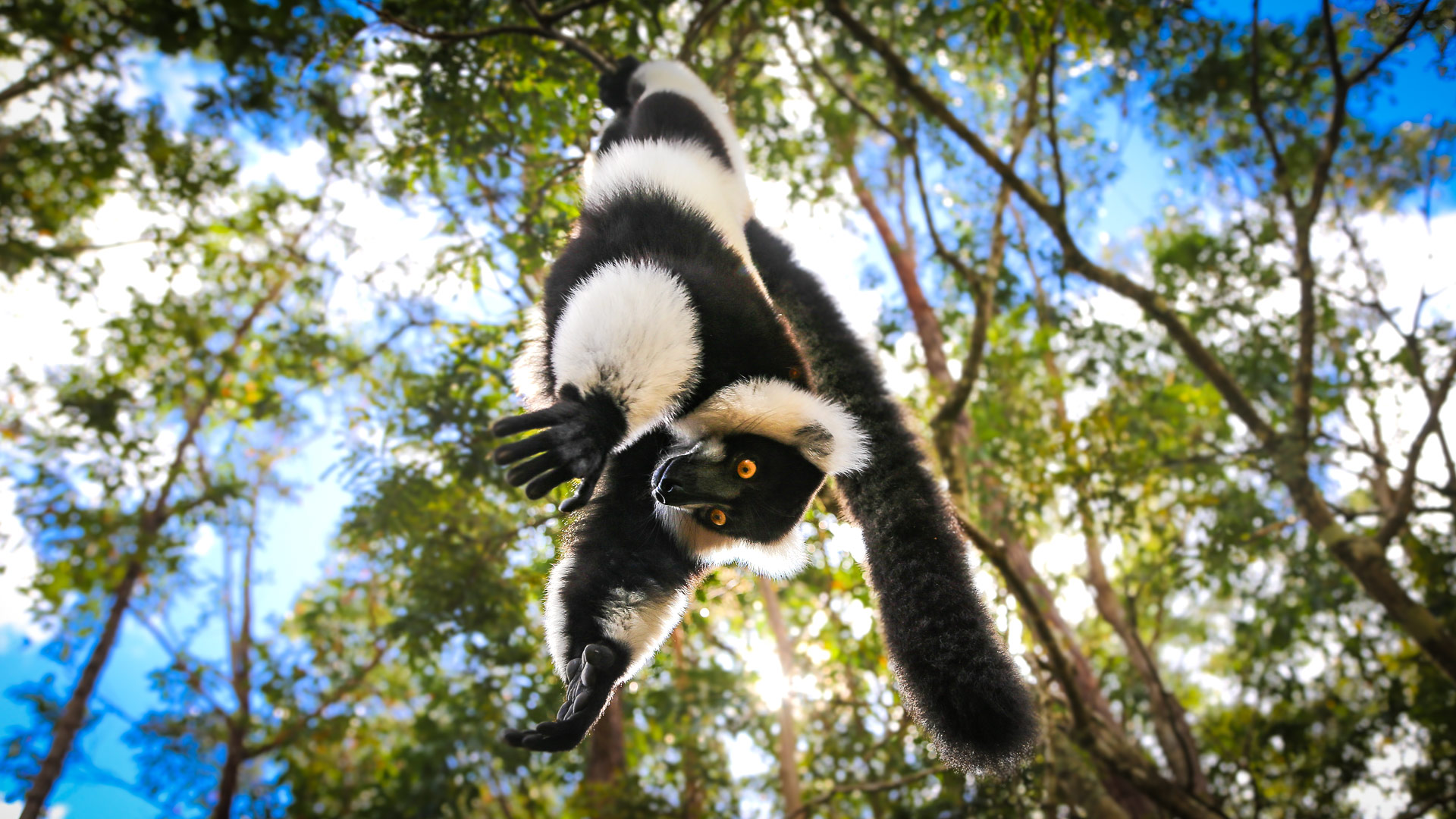
Safari in Madagascar
Madagascar
is one of the most divergent
places on the planet
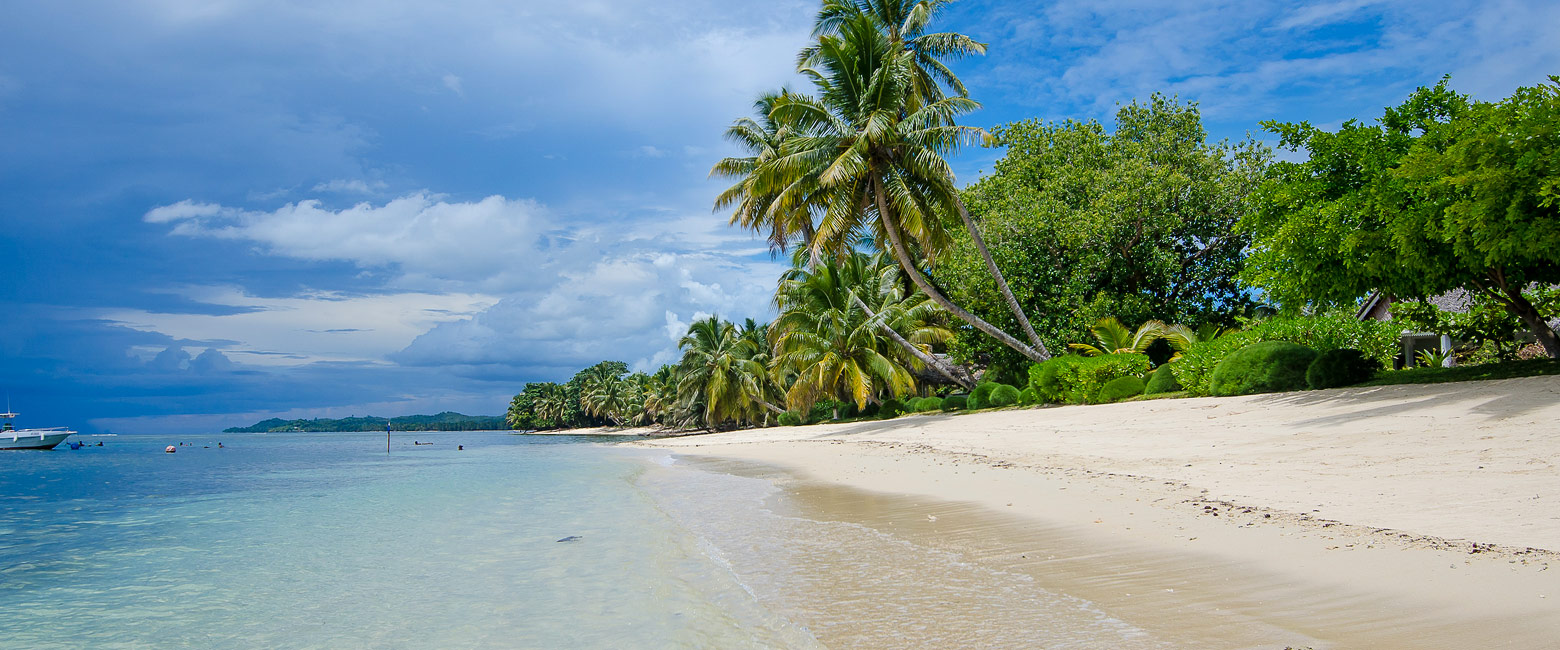
flora and fauna that evolved in isolation
Madagascar is a truly remarkable country, the largest island in the world and with a natural environment that is really like no other on the planet.
With the island having been cut off from the rest of the world for almost 100 million years, an almost completely different flora and fauna has evolved to fill all the various ecological niches.
Of the 200,000 species found on Madagascar, more than 150,000 are endemic to the island, including over 50 species of lemurs, fossa mongooses that look like dogs, tenrecs that have evolved to look like hedgehogs and evil-looking aye-ayes with ridiculously long middle fingers.
This really is another world.
The majority of travellers to Madagascar choose to visit three to six different locations, carefully chosen to provide the right blend of landscapes, wildlife and culture.
From a landscape perspective, we start with the high mountains of the eastern side of the island, whose rainforests descend from the clouds all the way down to the coral lagoons of the Indian Ocean, packed with an extraordinary array of rare and endemic species.
On the western side of the island, the land is more undulating and dotted with the characteristic tsingy eroded limestone outcrops, punctured by inaccessible valleys and sacred caves in which various lemurs and other creatures make their homes.
To the southwest lie the arid flatlands of the spiny forest, home to yet another ridiculously broad array of exotic species.
Virtually the whole of the coast is fringed by coral reefs, which are home to a more familiar but equally impressive panoply of marine creatures, notably featuring humpback whales.
The country is also home to a huge range of different peoples and cultures, from the foodie French expats to the hunter-gatherers of the Mikea tribe.
Madagascar, when done properly, is an extremely cool country to visit, especially if you’ve been on safari before and are looking for a very different range of experiences from your next trip to Africa.
Trips are typically of 10-18 nights duration, but can easily be extended to three or four weeks and continue to deliver varied and interesting experiences.
Because of the amount of time needed to do the country justice, Madagascar is rarely combined with other countries, except in unusually long trips.
However if you just want to pop in for a couple of highlights, then the safari areas of South Africa, Botswana, Zambia and Zimbabwe are relatively easy to visit in combination.
The main potential downside in Madagascar is that the travel infrastructure is not well developed, with relatively unreliable transport and only a small selection of decent lodges.
Although the total visitor numbers are relatively low, the weak infrastructure can cause a significant clustering in certain key locations, which can become surprisingly touristy (and even tacky) in the high season. Working around these issues is a key aspect to building a great trip.
Another issue is that with the severe shortage of decent accommodation options, booking a long way ahead is critical to enable us to find space in the handful of good lodges.
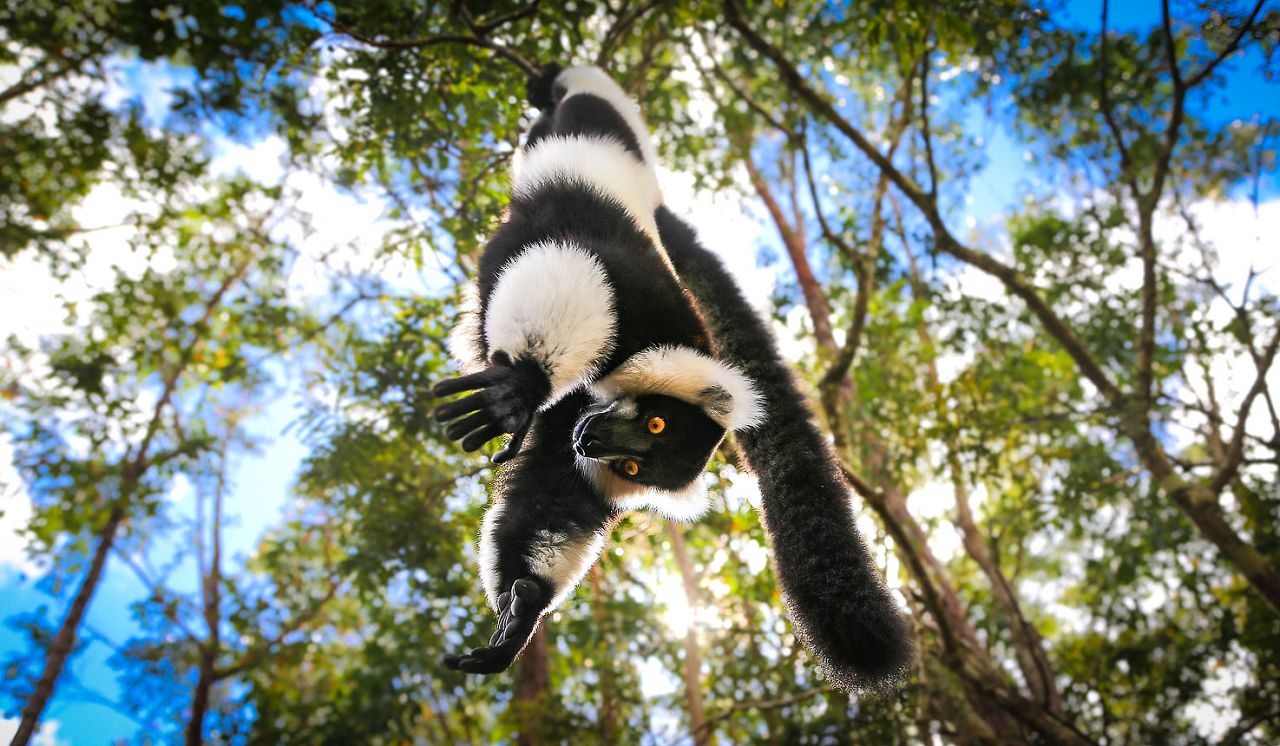
Gallery
Map
The best time to visit Madagascar is generally considered to be during the Apr-Nov cool dry season.
The tropical eastern side of the country has a slightly shorter optimum period of Sep-Nov, although that only really applies to a couple of lesser-visited areas (Toamasina and Masoala).
The east of the country has a largely humid tropical highland climate, where the west of the country has a much drier and more comfortable climate. The southwest is very dry.
So if you do want to travel during the converse Dec-Mar warm rainy season, then if you stick to more westerly areas the weather conditions should be reasonably comfortable (and visitor numbers will be much lower).
Getting around
International flights into Madagascar are into the capital, Antananarivo, in the northcentral part of the country, or into the beach area of Nosy Be on the northwest coast.
Travel around Madagascar is largely by air to the main hubs, but with overland safari sections often connecting areas within each region.
Where to stay
The usual way to go about choosing where to stay during your trip is to start by selecting the areas you would like to visit, then looking at the various options in each area.
In all honesty there’s such a limited range of options in most areas that you won’t have to work too hard making lodge selections.
usually best visited during the Apr-Nov cool dry season
let us know your thoughts about Madagascar
and we will help you create the perfect safari
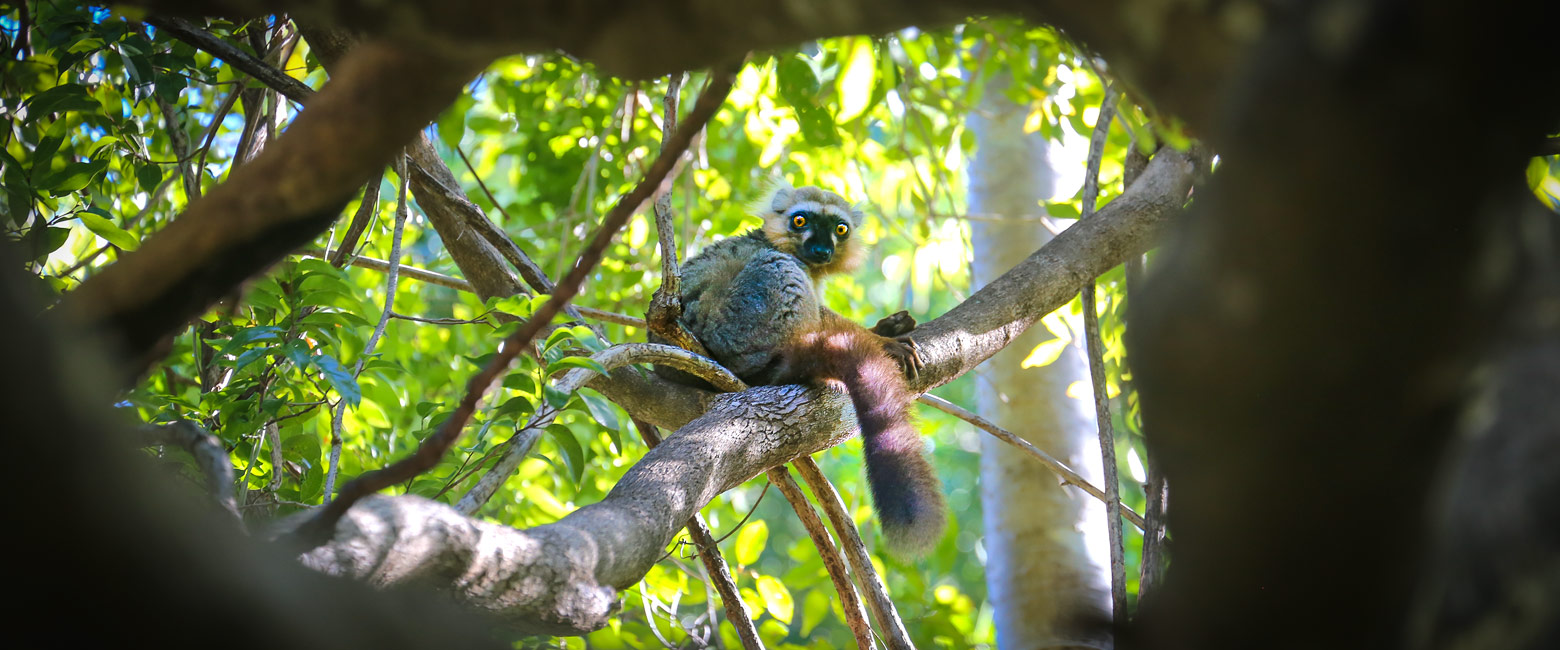
Extraordinary tailor-made adventures,
from earthy and edgy to easy and extravagant
From around USD 2500 per person, you set the ceiling
Sample Trips
Here are some of our popular trip shapes
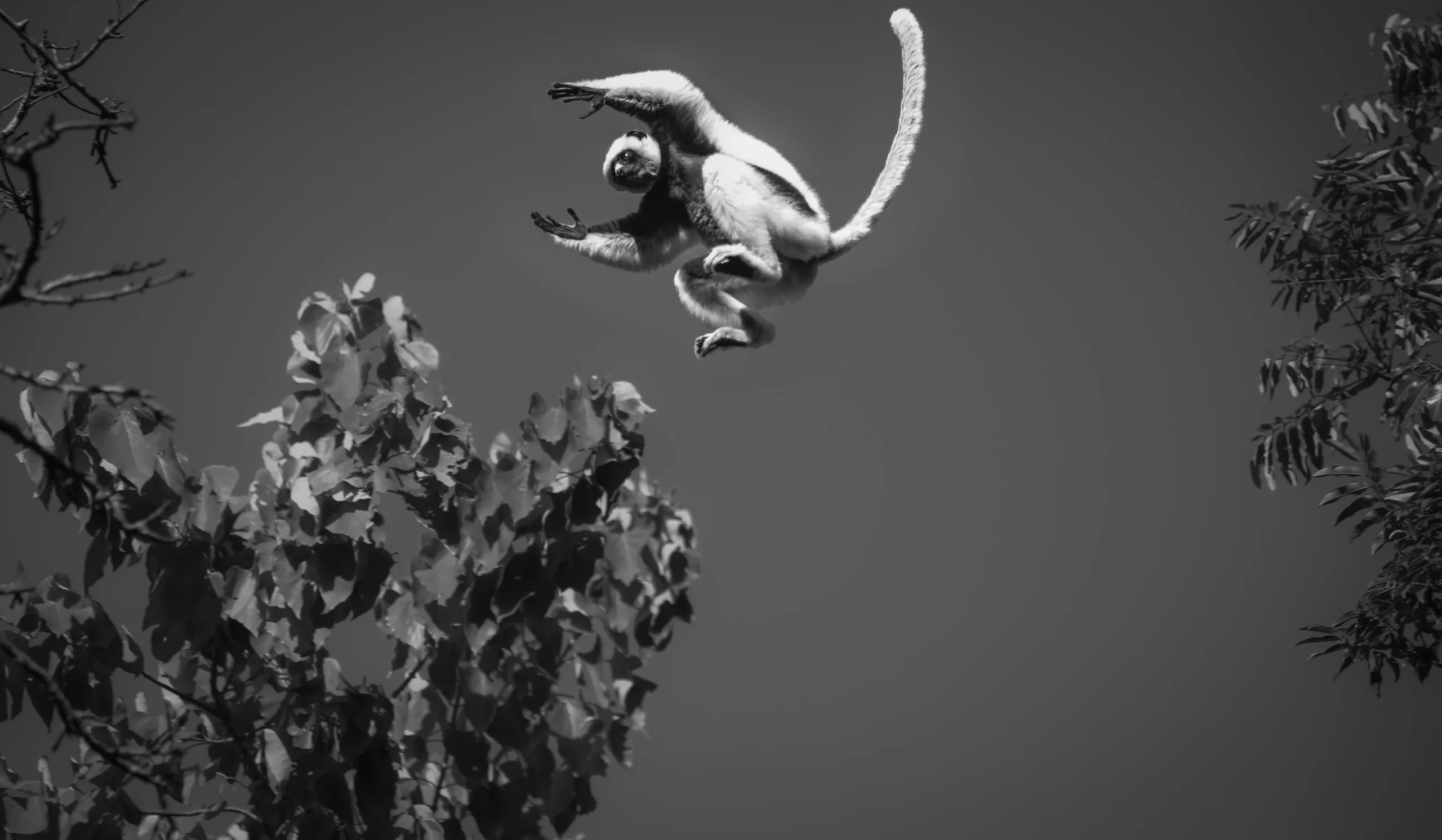
Get started on your trip
It’s never too soon to get in touch, we are here to help with every stage of your planning.
Best Lodges
We regularly inspect and photograph all of the the best lodges, to ensure that we always recommend the most suitable options
Key Locations
Take a look around related locations. Click ‘View more’ to explore locations further afield.



























